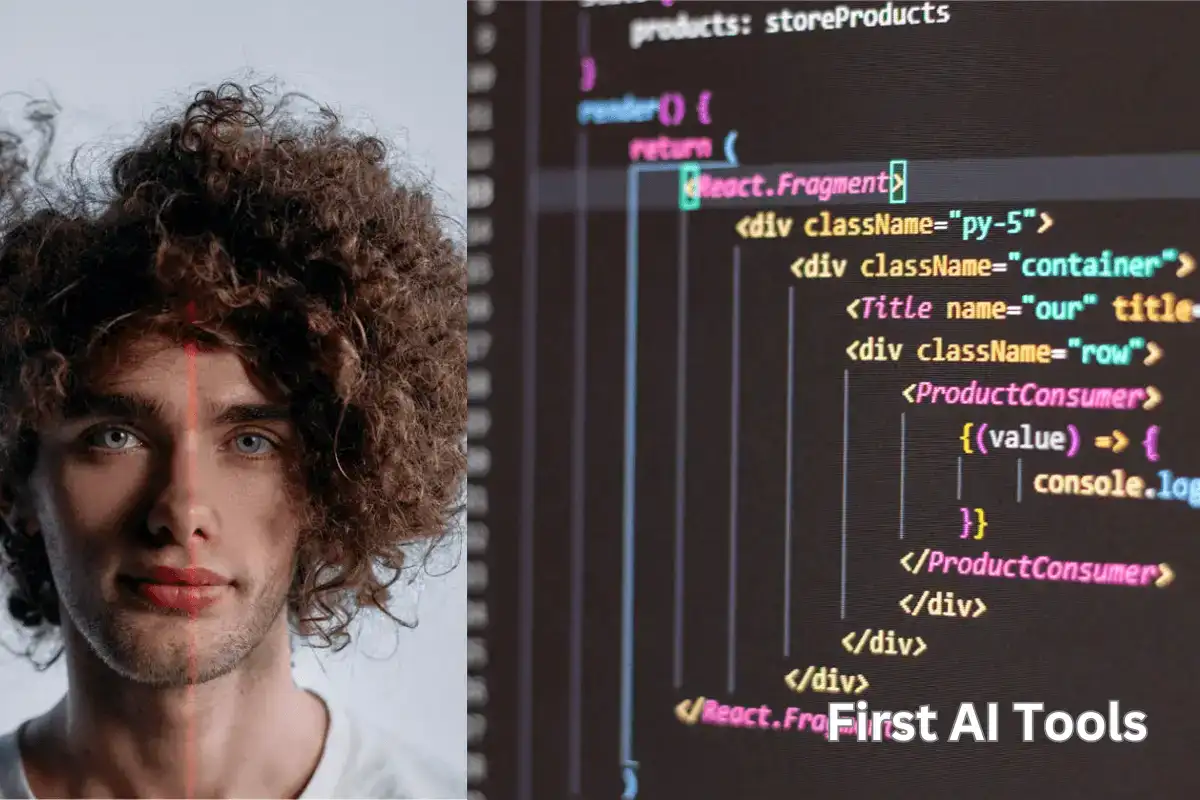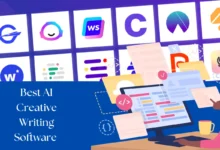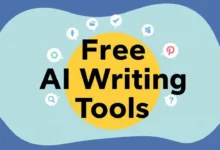Are you ready to use artificial intelligence (AI) in 2025? AI is growing fast, and it’s key for beginners to know the main top first AI tools. This guide will show you the AI tools world, their benefits, and how to use them to change your business and decisions.
AI has changed many industries, bringing new chances for better work, saving money, and smarter choices. Knowing the main AI tools will help you keep up with AI and stay ahead.

We’ll look at AI tools’ key points, like their use in marketing, sales, and data analysis. You’ll find step-by-step guides, new trends, and useful tips to use AI tools well in your company.
Table Of Contents
- 1 Introduction to AI Tools
- 2 Benefits of Using AI Tools
- 3 Essential Top first AI Tools for Business
- 4 The Top First AI Tools
- 5 The Best and Top First AI Tools for Marketing and Sales
- 6 AI Tools for Data Analysis and Insights
- 7 Implementing AI Tools in Your Organization
- 8 The Future of AI Tools
- 9 Conclusion
- 10 FAQ About top First AI tools
- 10.1 What are the best AI tools for beginners to start with in 2025?
- 10.2 How can AI tools help businesses increase efficiency and productivity?
- 10.3 What are some examples of AI tools for marketing and sales?
- 10.4 How can organizations effectively implement AI tools and measure their success?
- 10.5 What industries are likely to see the most significant impact from AI tools in the coming years?
Key Takeaways
- Understand the essential AI tools for beginners in 2025
- Learn about the benefits of AI tools, such as increased efficiency and cost savings
- Discover AI tools specifically tailored for marketing, sales, and data analysis
- Gain insights into developing an AI strategy and measuring its success
- Explore the future of AI tools and their potential applications across industries
Get ready to start your AI tools journey and see how they can help your business. Let’s explore the top first AI tools every beginner should know in 2025!
Introduction to AI Tools
In today’s fast-changing world, AI tools are changing how businesses work and tasks are done. So, what are AI tools? They are software or systems that use artificial intelligence to automate tasks, analyze data, or make decisions. These tools use machine learning and natural language processing to solve problems in many areas.
The growth of AI technology has been amazing. With more computing power and data, AI tools are getting smarter and easier to use. We see AI in chatbots, virtual assistants, predictive analytics, and more. It’s changing healthcare, finance, marketing, and manufacturing.
What are AI Tools?
AI tools are software or systems that use artificial intelligence to do specific tasks or offer smart solutions. They can handle lots of data, find patterns, and make choices based on rules or learning. Examples include chatbots, predictive analytics, computer vision, NLP tools, and recommendation engines.
The Rapid Growth of AI Technology
AI technology has grown fast in recent years. Better hardware and more data have helped create more advanced AI models. This has sped up AI research and development.
A report by Grand View Research says the global AI market will hit USD 390.9 billion by 2025. It will grow at a 46.2% CAGR from 2019 to 2025. This growth is because more industries are using AI tools.
“AI is likely to be either the best or worst thing to happen to humanity.” – Stephen Hawking
As AI keeps getting better, it’s key for businesses and people to know about new top first AI tools and their uses. Using these tools well can help companies stay ahead, make things more efficient, and find new ways to grow and innovate.
Benefits of Using AI Tools
Businesses in many industries are using AI tools to make things better. They help streamline operations, boost productivity, and stay ahead of the competition. AI tools bring many benefits that help businesses grow and improve their bottom line.
Increased Efficiency and Productivity
AI tools make businesses more efficient and productive. They automate tasks that take a lot of time, freeing up people to do more important work. For example, AI chatbots can answer customer questions 24/7, making customers happier.
AI can also analyze huge amounts of data quickly. This means businesses can make decisions faster and solve problems quicker.
Cost Savings and ROI
Using AI tools can save businesses a lot of money and improve their ROI. AI helps businesses use their resources better and cut down on costs. It also helps make better decisions based on data, reducing the chance of making costly mistakes.
Here’s a table showing some potential savings and ROI gains from using AI tools:
| AI Tool Application | Potential Cost Savings | Estimated ROI |
|---|---|---|
| Automated customer service | 30-50% | 3-5x |
| Predictive maintenance | 20-40% | 2-4x |
| Supply chain optimization | 15-30% | 2-3x |
Enhanced Decision Making
AI tools help businesses make better decisions by giving them valuable insights. AI looks at lots of data and finds patterns and trends that humans might miss. This helps businesses:
- Find new opportunities
- Use resources better
- Know what customers want
- Stay ahead of risks
As Microsoft CEO Satya Nadella said:
“AI is the defining technology of our times. It’s going to reshape every industry and every business.”
By using AI tools, businesses can stay ahead, innovate, and succeed in the digital world.
Essential Top first AI Tools for Business
In today’s fast-paced business world, staying ahead is key. As we look to 2025, top first AI tools for business are crucial. They help organizations stay competitive by streamlining processes and improving decision-making.
AI is changing customer service. AI chatbots and virtual assistants are now the norm. They handle inquiries 24/7, providing quick and accurate answers. This leads to happier customers and loyalty.
“AI is not just a technology, it’s a transformative force that will reshape every industry and every business.” – Satya Nadella, CEO of Microsoft
AI is also a game-changer in marketing and sales. AI analytics tools give businesses deep insights into customer behavior. They analyze data from social media, websites, and more, helping marketers create targeted campaigns. AI also helps sales teams find better leads and predict customer churn.
- Improved customer service with AI-powered chatbots and virtual assistants
- Enhanced marketing and sales strategies through AI-driven analytics
- Streamlined operations and increased efficiency with AI automation tools
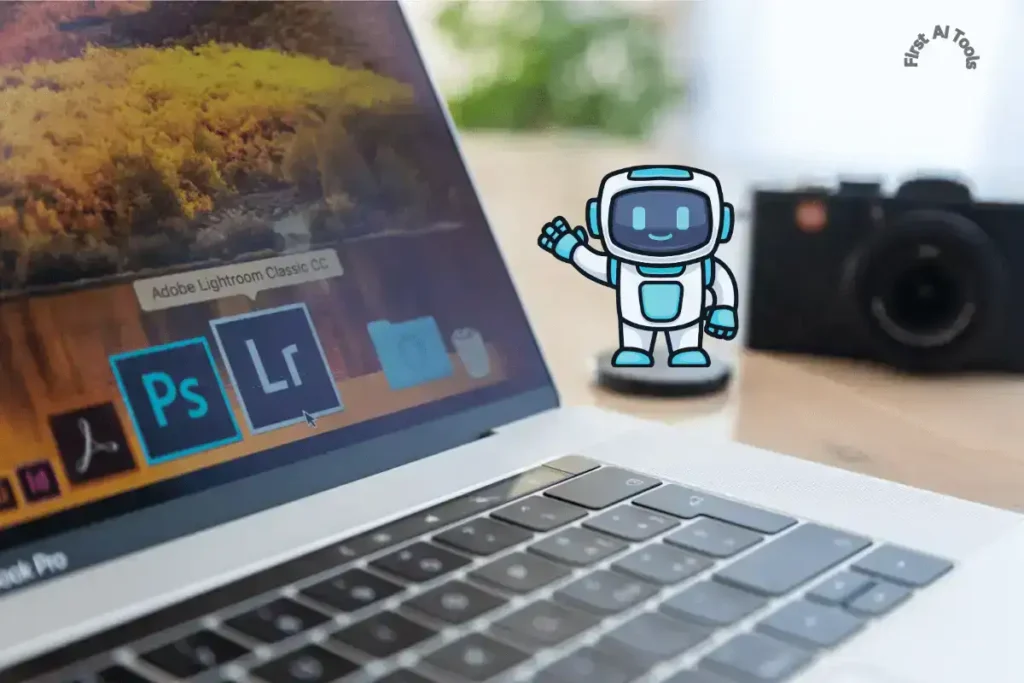
Essential and top first AI tools are also changing how businesses operate. AI automation tools make tasks more efficient and reduce errors. They help with everything from document processing to supply chain management, enabling businesses to make smart decisions fast.
The Top First AI Tools
Are you new to artificial intelligence and looking for beginner-friendly top First AI tools? With many options, it’s hard to know where to start. We’ll guide you through the top and the top first AI tools for beginners, making it easy to start your AI journey.
Overview of the Best and the Top First AI Tools for Beginners
Choosing the right and the top first AI tools is key when starting. Here are some top picks for beginners:
- Teachable Machine: This Google tool lets you train models without coding.
- Lobe: Lobe offers a visual interface for creating custom machine learning models.
- Runway ML: Runway ML makes it easy to experiment with AI for tasks like image editing.
“The best way to learn about AI is to dive in and start using the tools available. Don’t be afraid to experiment and make mistakes – that’s how you’ll grow and improve.”
Step-by-Step Guide to Getting Started with Top First AI Tools
Now, let’s get started with the top or the top first AI tools for beginners:
- Pick a tool that fits your interests and goals. Whether it’s images, text, or audio, there’s a tool for you.
- Sign up and get to know the tool’s interface and features.
- Learn the basics with tutorials and guides. Many tools have resources for beginners.
- Start your own projects. Try making a simple model or creating AI content.
- Join communities and forums to connect with other beginners and learn from their experiences.
By following these steps and practicing, you’ll master best and top first AI tools basics. Remember, everyone starts somewhere. Enjoy the learning journey!
The Best and Top First AI Tools for Marketing and Sales
In today’s fast-paced business world, AI tools for marketing and sales are changing how companies interact with customers and grow revenue. These tools use artificial intelligence to make processes smoother, personalize marketing, and make decisions based on data. This helps businesses stay competitive.
AI-Powered Customer Relationship Management (CRM)
AI-powered CRM systems are changing how businesses handle customer interactions and data. These tools automate tasks like data entry and lead prioritization. This lets your sales team focus on building relationships and closing deals.
With AI insights, you can understand your customers better. This knowledge helps you offer personalized experiences. Such experiences build loyalty and increase sales.
Personalized Marketing with AI
Personalized marketing is now a must in today’s competitive world. AI tools for marketing help you send targeted content to customers through various channels. They analyze customer data to segment audiences and tailor messages.
Examples of AI-powered personalized marketing include:
- Dynamic email content that adapts to each recipient’s interests and behaviors
- Personalized product recommendations based on browsing and purchase history
- Customized website experiences that cater to individual user preferences
Sales Forecasting and Predictive Analytics
Sales forecasting and predictive analytics are key for businesses aiming to optimize their sales strategy. AI and machine learning algorithms analyze data to provide accurate predictions. This helps in making informed decisions about resource allocation and pricing strategies.
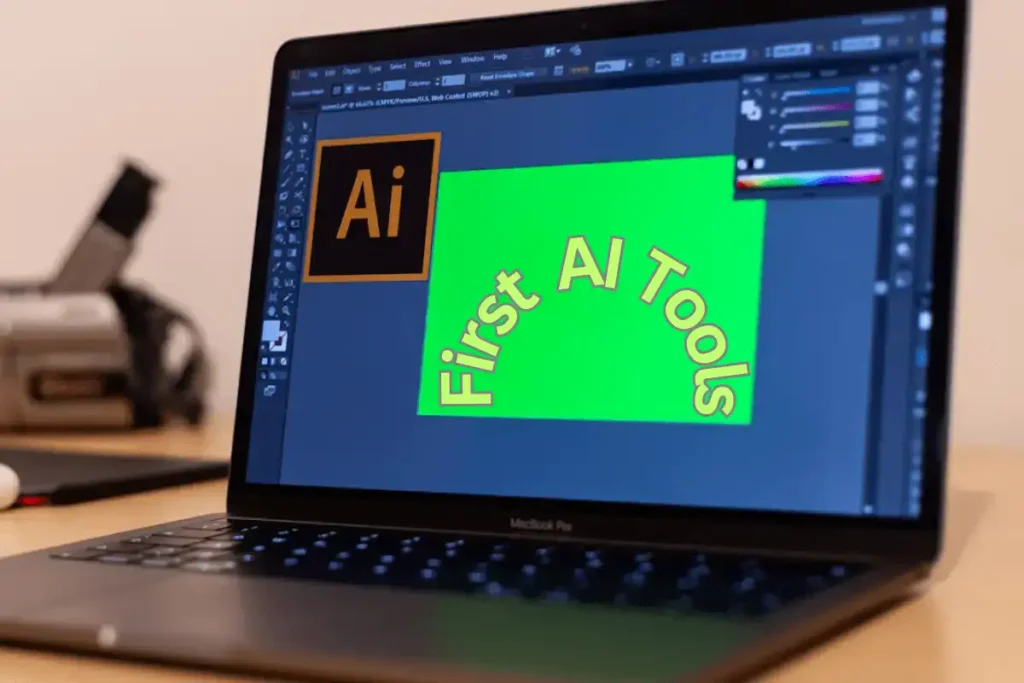
“AI is not just a technology, it’s a transformative force that is reshaping the way we do business. By embracing AI tools for marketing and sales, companies can unlock new levels of efficiency, personalization, and growth.”
As the business landscape evolves, top first AI tools for marketing and sales will become more crucial. Investing in these technologies today prepares your organization for future growth and keeps you competitive.
AI Tools for Data Analysis and Insights
In today’s world, businesses need to find valuable insights in their data. AI tools for data analysis have changed how companies analyze data. These tools use machine learning and advanced stats to find hidden patterns and trends in big datasets.
Top First AI tools help make complex data easy to understand. Tools like Tableau and PowerBI create interactive dashboards and charts. This lets users quickly see important data points and track progress.
Top First AI tools are also great at predicting future trends. They look at past data to forecast what will happen next. This helps businesses make smart decisions, use resources better, and avoid risks. Some top predictive analytics tools include:
- IBM SPSS Modeler
- RapidMiner
- KNIME
- SAS Advanced Analytics
AI tools are key in understanding customers. They analyze how customers behave and what they like. This helps businesses create better marketing, offer personalized products, and improve customer service. Tools like Adobe Analytics and Google Analytics 360 are great for this.
| AI Tool | Key Features | Benefits |
|---|---|---|
| Tableau | Interactive data visualization, dashboards, KPI tracking | Intuitive data exploration, real-time insights |
| IBM SPSS Modeler | Predictive modeling, data mining, text analytics | Accurate forecasting, risk mitigation |
| Adobe Analytics | Customer segmentation, behavioral analysis, attribution modeling | Personalized experiences, improved targeting |
Gartner predicts that by 2025, 75% of organizations will shift from piloting to operationalizing AI, driving a 5X increase in streaming data and analytics infrastructures.
“Data is the new oil. It’s valuable, but if unrefined it cannot really be used. It has to be changed into gas, plastic, chemicals, etc. to create a valuable entity that drives profitable activity; so must data be broken down, analyzed for it to have value.” – Clive Humby, UK Mathematician and architect of Tesco’s Clubcard
Implementing AI Tools in Your Organization
Adding best and top first AI tools to your team can change the game. But, it needs careful planning and action. To make AI work well, create a detailed AI strategy that fits your business goals and what you have.
First, find out where AI can make a big difference. This could be in automating tasks, bettering customer service, or making smarter decisions. Look at your current ways of working and systems to see if AI can fit in.
Developing an AI Strategy
Your AI plan should say what you want to achieve, when, and how you’ll know if you’re doing it right. It should also think about the ethics of AI and follow the rules and best practices.
“A well-defined AI strategy is the foundation for successful AI adoption. It helps organizations prioritize initiatives, allocate resources effectively, and mitigate potential risks.” – Deloitte Insights
Training Your Team on AI Tools
After picking the right and top first AI tools, make sure your team knows how to use them. This means teaching them the technical stuff and how AI changes their jobs.
Think about working with AI experts or training groups to make special programs for your team. Keep learning and let your team try out top first AI tools in a safe space.
Measuring the Success of Your AI Implementation
To see if your AI is working, set clear goals and KPIs that match your business aims. You might track things like:
- Increased productivity and efficiency
- Improved customer satisfaction scores
- Higher sales and revenue growth
- Reduced costs and error rates
Keep an eye on these numbers to find what needs work and tweak your top first AI tools. Celebrate wins and share tips to keep the innovation spirit alive.
By sticking to your AI strategy and putting in the effort, you can make AI work for your team. This can bring big benefits to your organization.
The Future of AI Tools
top First AI tools with AI technology is growing fast, and the future looks bright. We’ll see new trends and uses in many fields. These changes will make a big difference in how we work and live.
Emerging Trends in AI Technology
Natural language processing (NLP) is getting better. This means AI can understand us better. It will talk to us more smoothly. Also, AI will work with blockchain and IoT, making systems safer and more connected.
There’s a big push for explainable AI (XAI). This makes AI decisions clearer. As AI gets more common, we’ll want systems that explain themselves.
Potential Applications of Top First AI Tools in Various Industries
AI can help in many areas. Each field has its own challenges and chances. Here are some exciting ones:
- Healthcare: AI can spot diseases early, create custom treatments, and find new medicines.
- Finance: AI helps find fraud, assess risks, and improve investments.
- Manufacturing: top first AI tools can make production better, cut downtime, and check quality.
- Transportation: AI is used for self-driving cars, smarter traffic, and keeping vehicles running well.
Below is a table showing some top first AI tools for different industries and their benefits:
| Industry | AI Tool | Potential Benefits |
|---|---|---|
| Healthcare | Medical imaging analysis | Improved accuracy and speed of diagnosis |
| Finance | Fraud detection systems | Reduced financial losses and enhanced security |
| Manufacturing | Predictive maintenance | Minimized equipment downtime and optimized maintenance schedules |
| Transportation | Autonomous vehicles | Increased safety and efficiency in transportation |
“The future of AI is not about replacing humans, but rather about augmenting and empowering them to achieve more than ever before.” – Fei-Fei Li, Professor of Computer Science at Stanford University
Looking ahead, AI will be key in shaping our world. Keeping up with new trends and uses will help businesses and people succeed.
Conclusion
Top First AI tools bring many benefits that change how we work in today’s fast world. They help us work better, save money, and make smart choices. Using AI is now key to keep up and succeed in the future.
AI is changing many fields, like marketing and data analysis. To get the most from AI, you need a good plan, trained teams, and to check how well AI works. Keeping up with new AI trends helps you lead in innovation.
Looking to 2025 and beyond, AI will keep growing and changing our lives and jobs. Knowing the main top first AI tools and using them in your work prepares you for the future. Embrace AI, stay ahead, and find new chances for growth and success online.
FAQ About top First AI tools
What are the best AI tools for beginners to start with in 2025?
For beginners in 2025, the best and first AI tool in my opinion, TensorFlow, Keras, and PyTorch are top choices. They are easy to use and have great resources for learning AI.
How can AI tools help businesses increase efficiency and productivity?
AI tools automate tasks and make workflows smoother. They also analyze data to give insights. This frees up people to focus on creative tasks, making businesses more efficient and productive.
What are some examples of AI tools for marketing and sales?
For marketing and sales, tools like Salesforce Einstein and Adobe Target are great. They help understand customers and improve sales. Anaplan is another tool for forecasting sales.
How can organizations effectively implement AI tools and measure their success?
To use AI tools well, have a clear strategy and train your team. Set up KPIs to track success. Regularly check how AI tools are doing and make decisions based on data.
What industries are likely to see the most significant impact from AI tools in the coming years?
Healthcare, finance, and manufacturing will see big changes from AI. In healthcare, AI aids in finding new medicines and monitoring patients remotely. Finance gets better at spotting fraud and making smart investments. Manufacturing uses AI for better maintenance and supply chain management.


